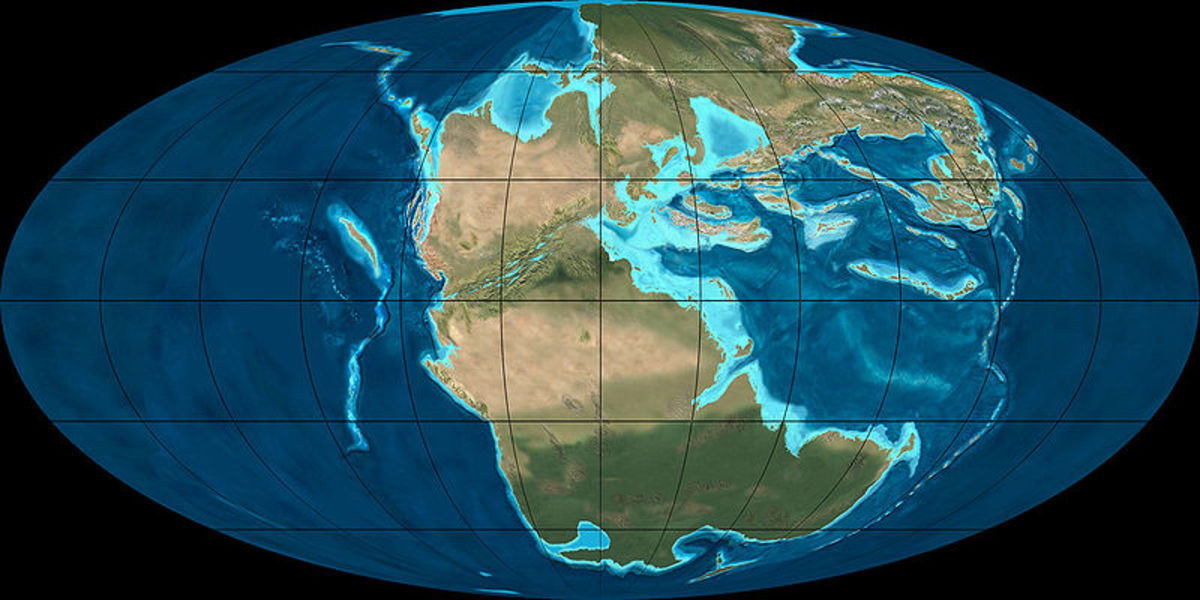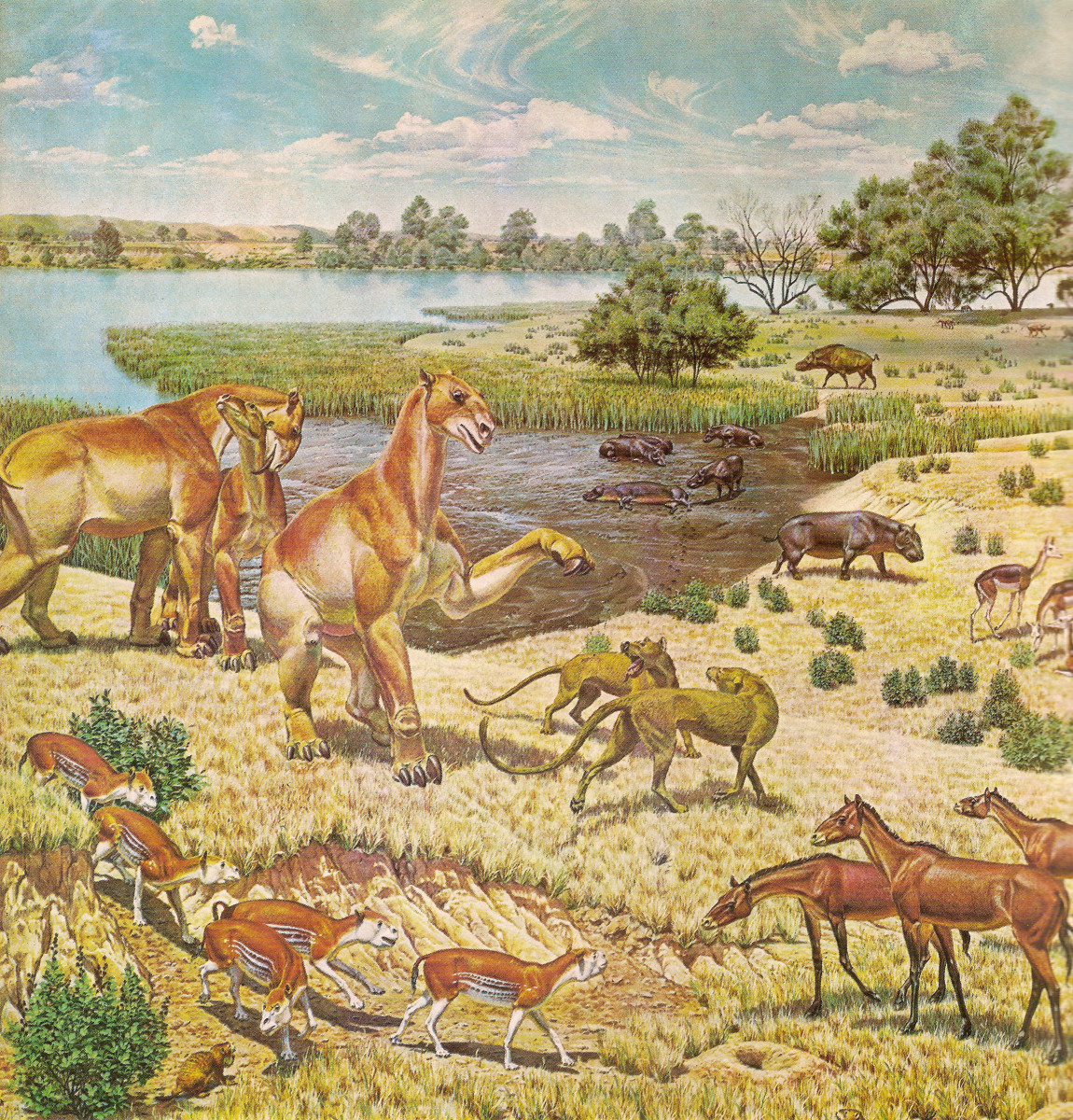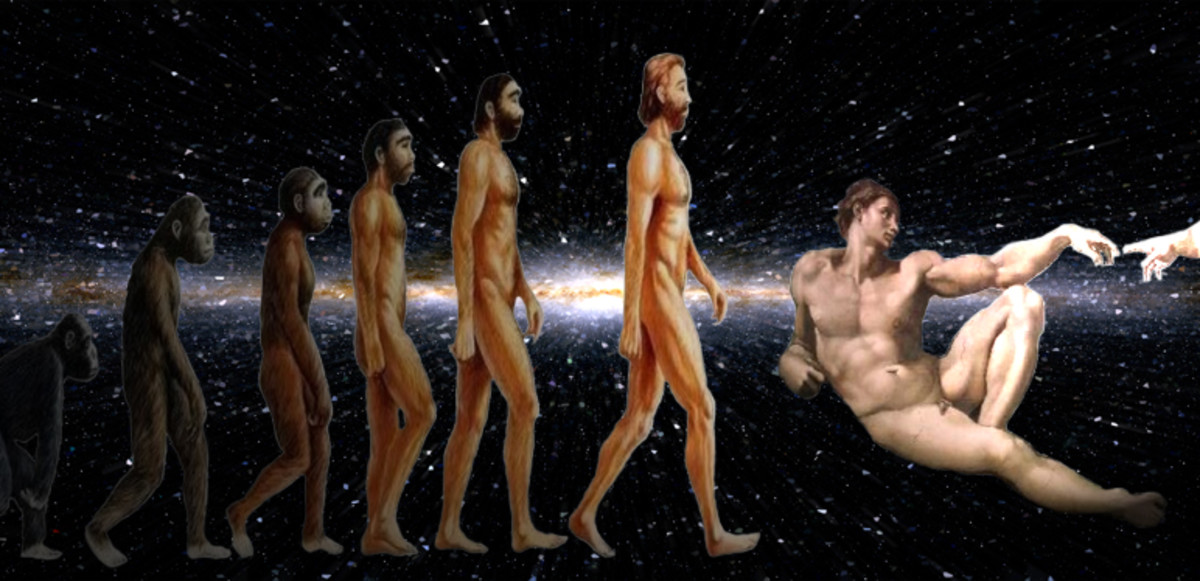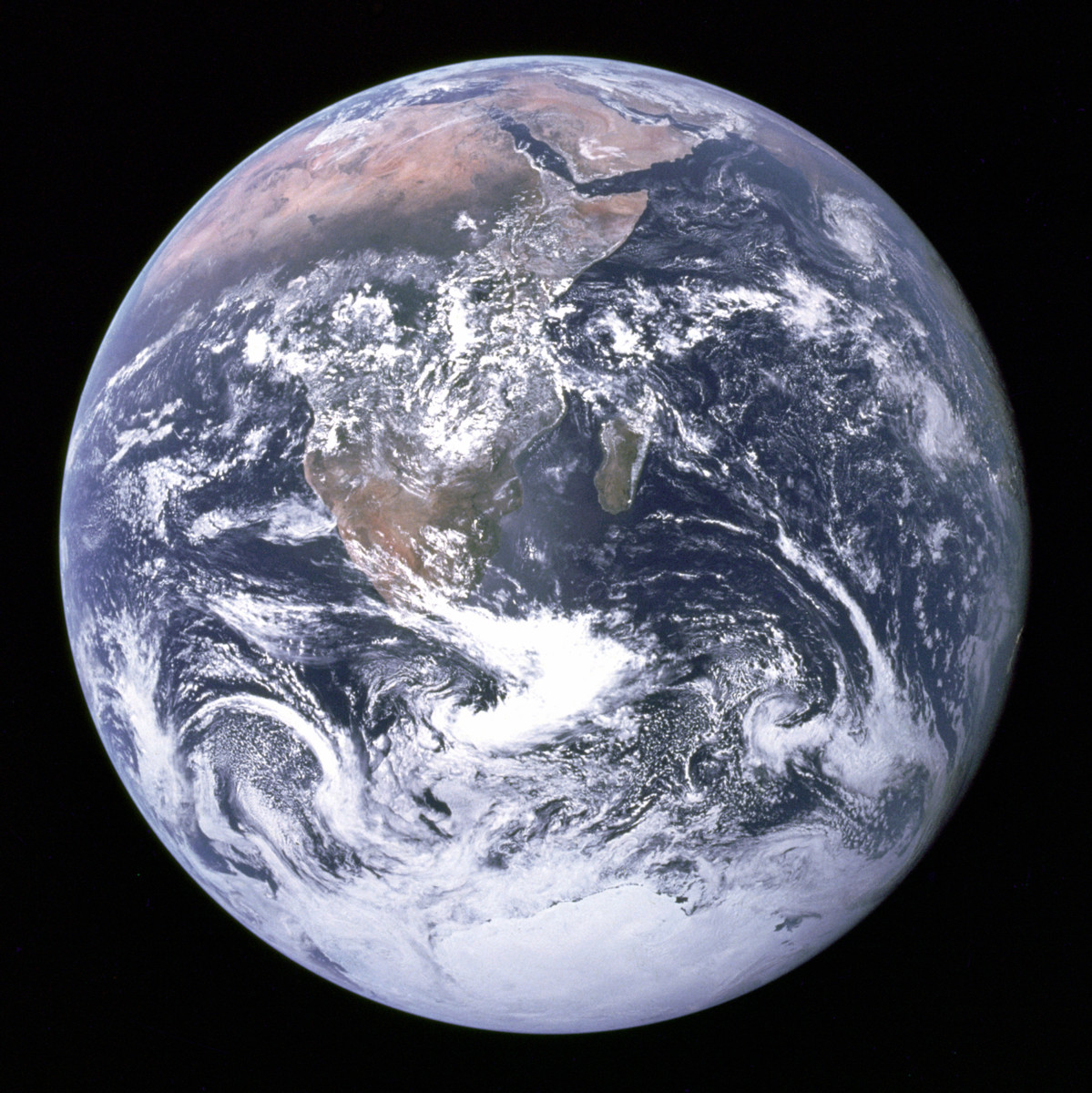A History Of Life On Earth: The Cenozoic Era
The Cenozoic Era
The mass extinction event that occurred 65 million years ago marks the start of the Cenozoic or ‘recent’ era, sometimes referred to as the Tertiary (third) era. The extinction event killed any animal that was larger than a crocodile, including virtually all of the dinosaurs. Those small animals that survived through to the Cenozoic era found themselves in a very different world. This era is also marked by the increasing separation of the continents and the formation of their own unique plants and animals.
The Dinosaurs Legacy
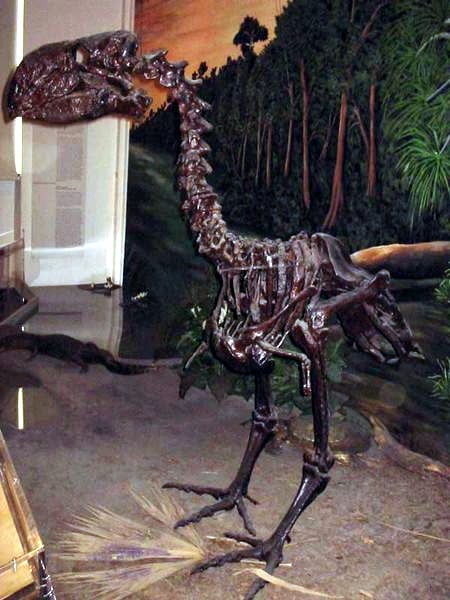
Palaeocene Epoch: 65-55 Million Years Ago
The Palaeocene epoch began with a devastated, burnt out world, still reeling from the impact of a giant asteroid, but the plants were quick to recover. Within just 100,000 years there were thick jungles and swamps covering much of the world; even the Polar Regions were covered in dense forests. Animals that survived the extinction event remained small so that they could move among the trees. The largest animals in this period were a lingering legacy of the recently departed dinosaurs; while giants like Tyrannosaurus had gone for good, a vicious feathered cousin called Gastornis assumed the role of top predator, and at 7 feet tall, it was by far the largest animal of its day. It roamed widely through the jungles of Europe and North America, preying mostly on small mammals.
Speaking of mammals, the demise of the dinosaurs saw the mammals begin to expand and move into new environmental niches. Then, at the end of the Palaeocene epoch, some 55 million years ago, there was an explosion in mammalian variety. The ancestors of many modern mammalian groups appeared for the first time, including all the hoofed animals, elephants, rodents, primates, bats, early whales and sea cows. The mammals were unwittingly beginning to assert their domination of the planet.
Life in the Eocene
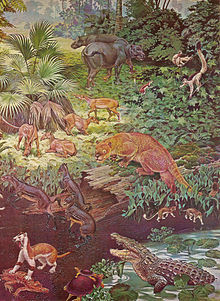
The Walking Whale
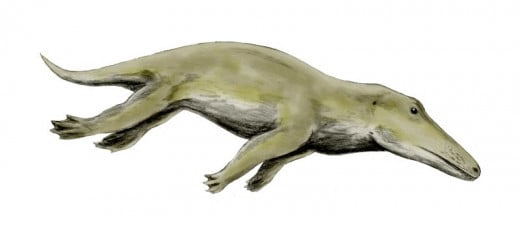
Eocene Epoch: 55-34 Million Years Ago
At the start of the Eocene, much of the Earth was still covered in thick jungle. High global temperatures created a hothouse planet. Living on the forest floor were small mammals, such as the small horse Propalaeotherium, and the hopping insectivore Leptictidium. Living in the trees was Godinotia, one of the earliest primates and a possible human ancestor. In Asia meanwhile lived a bizarre creature called Ambulocetus, an early form of whale that could still walk, albeit awkwardly on land.
Then, around 43 million years ago, the climate became cooler and drier. The dense jungles were replaced by woodlands and dusty plains. These more open conditions allowed the mammals to grow bigger.
Asia was home to giant brontotheres, which at first glance may have resembled rhinos, but were only distantly related. There were also massive carnivores such as Andrewsarchus. In the warm seas, the descendants of Ambulocetus had evolved into the first recognisable whales, while the African coasts, which at the time were covered in lush mangroves, provided home for an early form of elephant, Moeritherium, and the bizarre horned beast, Arsinotherium. Its horn was so large that it actually partially obscured its vision.
Around 36 million years ago, the isolated continent of Antarctica settled over the South Pole and started to freeze, causing huge ice sheets to form over its landmass. As a consequence, the world’s climate and oceans began to cool, disrupting the global weather and radically changing rainfall patterns. Many animals couldn't cope with these changes, and in only a few million years a fifth of all life on Earth became extinct. This small extinction event is sometimes called La Grande Coupure or ‘The Great Cut’.
A Bizarre Beast
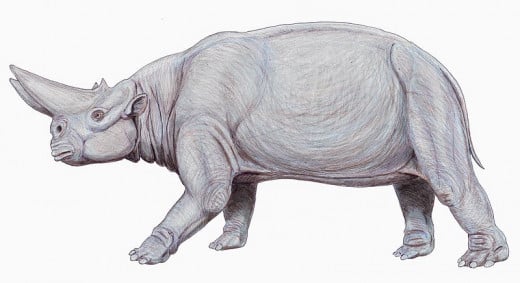
Life in the Early Eocene
Life in the Late Eocene Oceans
Fauna of the Oligocene
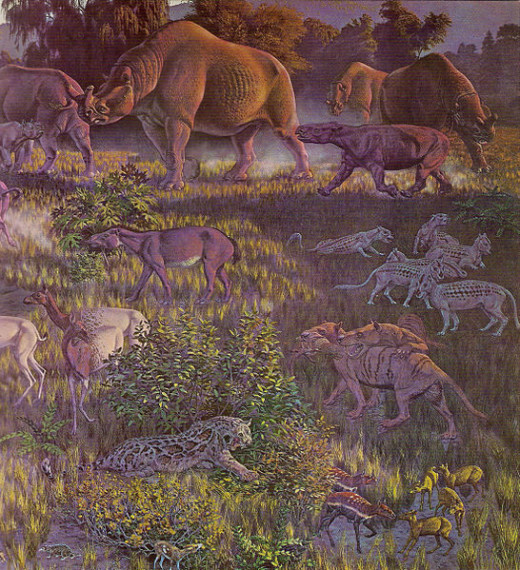
Oligocene Epoch: 34-24 Million Years Ago
The early Oligocene had a cool, dry climate, which gave rise to wide plains, scrublands and semi-desert. The climate change at the end of the Eocene saw the extinction of many of the more ancient mammal lineages. In their place came new species, including the direct ancestors to many modern mammals, such as the rhinos, horses, pigs, camels and rabbits.
The mammals continued to produce giants. Some such as Indricotherium became the largest land mammals ever and rivalled the dinosaurs in size, while others such as the Entelodon (a possible ancestor of modern pigs) and Hyaenodon (not related to modern hyenas) became formidable hunters. There were also the first true carnivores, such as the dog like Cynodictis.
As the continents continued to move about, South America and Australia became completely isolated from the rest of the world. Over the passage of time these island continents evolved their own unique fauna of marsupials and other bizarre creatures.
Around 25 million years ago, the first grasslands began to emerge in Asia. Until then, grasses had been an insignificant part of the landscape, but from that time onwards they grew to dominate large areas of the world, eventually covering one fifth of all dry land.
A Pig With an Attitude
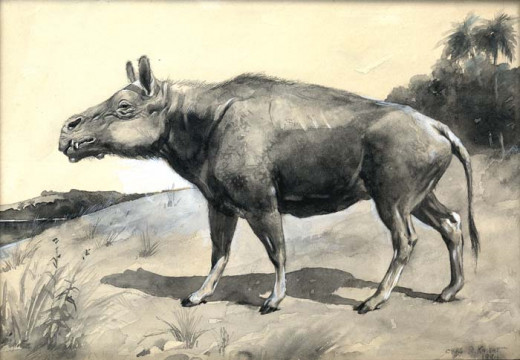
Life in the Oligocene
Fauna of the Miocene
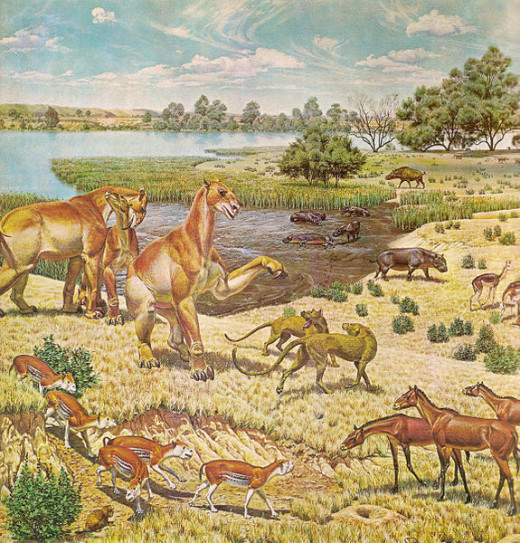
More on the Miocene Epoch
- Life on Earth During the Miocene Epoch
If you want to know more about the Miocene, then look no further than this wonderful hub by Teresa Coppens.
Miocene Epoch: 24-5 Million Years Ago
The wet and dry seasons of the Miocene climate ensured that large areas of the planet became covered in vast grasslands. It is not easy for animals to digest tough and fibrous grass, so mammalian herbivores had to evolve new types of teeth and digestive systems to take advantage of its abundance.
As a consequence, the grasslands were home to early species of cow, deer and horse. Many of these started to form themselves into herds that would migrate with the changing seasons. Following these great herds were new types of fleet footed predators including cats and dogs.
Other animals preferred to keep browsing on the leaves of trees and bushes. Some grew quite large, such as the giant Deinotherium, with its weird downward facing tusks and the strange looking Chalicotherium that walked like a gorilla and yet was a close relative of modern horses.
The Miocene also saw the rise of mountain chains, such as the Alps, the Himalayas, the Andes and the Rockies. Some of these new mountains were high enough to disrupt the atmospheric air flow, and thus started to play a major role in global weather patterns.
The Great Faunal Interchange
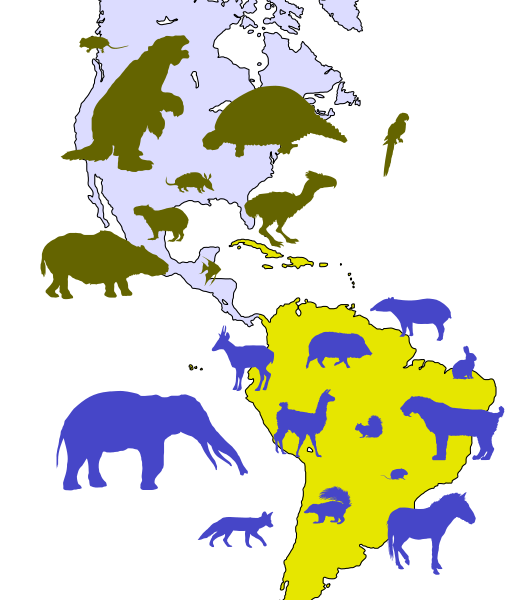
Pliocene Epoch: 5-1.8 Million Years Ago
In the Pliocene the world’s climate became more complicated. The planet became subdivided into many climatic regions, ranging from the freezing ice caps, through the wet temperate zones to the warmer tropics.
On every continent the open grasslands became filled with new grazing mammals and their associated predators. In Eastern and Southern Africa the dense woodlands gave way to open grasslands, encouraging our ancestors, early hominids such as Australopithecus to start coming down from the trees and spending more time on the ground.
Around 2.5 million years ago the South American continent, which had been isolated for nearly 30 million years, collided with North America. Powerful carnivores, such as Smilodon, moved south into Argentina, while gigantic southern oddities such as Doedicurus and Phorusrhacos moved north into the United States in an event known as the Great Faunal Interchange.
Two South American Oddities From the Pliocene
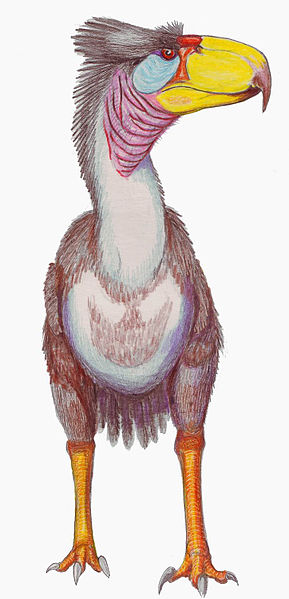
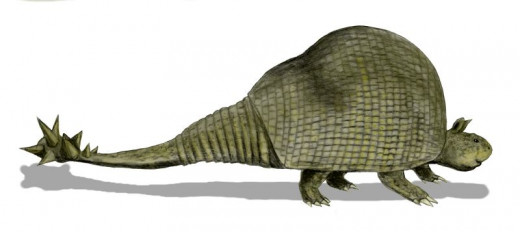
How our Ancestors Lived During the Pliocene
Life in South America During the Pilocene
Life in the Ice Age
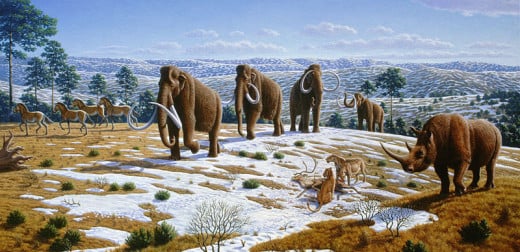
The Humans That Became Extinct
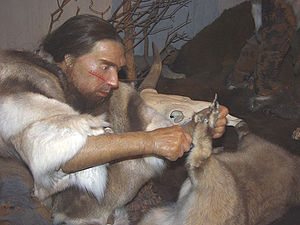
When Man Lived Alongside Mammoths
Pleistocene Epoch: 1.8 Million Years Ago- Present
The start of the Pleistocene saw the world plunged into a full ice age. Throughout the entire epoch, the Earth’s climate alternated between colder and warmer phases. The colder phases would last around 40,000 years, during which glaciers and ice sheets would spread across the continents. In the north, the great Arctic ice cap expanded as far south as London and New York. In between these cold phases, the climate became milder and warmer; in these so called interglacial periods, the ice caps receded and the sea levels rose.
Animals such as the woolly mammoth and the woolly rhino evolved thick fur coats and a layer of fat to help them live in the colder regions. Around them were herds of deer, horses and bison that were be hunted by giant versions of the modern lion, called the cave lion. Around 180,000 years these ice age herbivores were also hunted by two species of human; us and our close cousins, the Neanderthals.
The increasing severity of the ice age and the extreme climate swings put many large animals under a great deal of pressure, but it was overhunting by us that ultimately caused their extinction. The last glacial period ended some 10,000 years ago bringing about an interglacial that we are still living through today. Some scientists classify the last 10,000 years as a new global epoch, the Holocene, while others have pushed for it to be known as the Anthropocene, on account of the fact that this current interglacial has seen Homo sapiens assume dominance over the planet. This was achieved by changing our lifestyle, by ceasing hunting and gathering, and starting to settle down into fixed communities that supported themselves by growing crops and domesticating animals. These small communities soon grew into towns, and then cities. Within just a few thousand years, the human population has expanded exponentially, creating a global society based on advanced technology. In the process, many animal species with which humans shared the planet came under tremendous ecological pressure. As a result, we are living through, and contributing to, what scientists would describe as a mass extinction event. What happens next is whether we like it or not, very much up to us.
Clear and Present Danger


